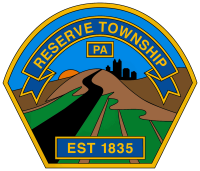MS4
Municipal Separate Storm Sewer Systems or MS4s
Storm water runoff is commonly transported through Municipal Separate Storm Sewer Systems (MS4s), from which it is often discharged untreated into local waterways. These storm sewer systems are:
- Owned by a state, city, town or other public entity that discharges to waters of the U.S.
- Designed or used to collect or convey storm water (including storm drains, pipes and ditches)
- Not a combined sewer (which carries storm water and sewage)
- Not part of a Publicly Owned Treatment Works (sewage treatment plant)
To prevent harmful pollutants from being washed or dumped into an MS4, operators must obtain a National Pollutant Discharge Elimination System (NPDES) permit and develop a storm water management program.
What’s included in an MS4 Program
Listed below are the 6 minimum control measures that operators of regulated small MS4s must incorporate into storm water management programs. These measures are expected to result in significant reductions of pollutants discharged into receiving water-bodies.
- Public Education and Outreach – An informed and knowledgeable community is crucial to the success of a storm water management program, since it helps to ensure greater support and program compliance as the public becomes aware of individual actions they can take to protect or improve the quality of area waters.
- Public Participation/Involvement – An active and involved community allows for broader public support, a broader base of expertise and a connection to other local environmental programs.
- Illicit Discharge Detection and Elimination – Illicit discharges are untreated discharges that could contribute high levels of pollutants, including heavy metals, toxins, oil and grease, solvents, nutrients, viruses and bacteria to receiving water-bodies. Operators of a regulated small MS4 are required to develop, implement and enforce an illicit discharge detection and elimination program.
- Construction Site Runoff Control – Storm water runoff from construction activities can have a significant impact on water quality. As storm water flows over a construction site, it can pick up pollutants like sediment, debris, and chemicals and transport these to a nearby storm sewer system or directly to a river, lake or stream.
- Post-Construction Runoff Control – Increased impervious surfaces, like parking lots, driveways, and rooftops, interrupt the natural cycle of gradual percolation of water through vegetation and soil. Instead, water is collected from surfaces such as asphalt and concrete and routed to drainage systems where large volumes of runoff quickly flow to the nearest receiving water. The effects of this process can include stream bank scouring and downstream flooding, which often lead to a loss of aquatic life and damage to property. Ordinances and other regulations are required to determine the appropriate best management practices and to ensure adequate long-term operation and maintenance of storm water controls.
- Pollution Prevention/Good Housekeeping – This measure involves recognizing the benefits of pollution prevention practices and includes the development and implementation of an operation and maintenance program. Reducing pollutant runoff from municipal operations into the storm sewer system can include employee training on how to incorporate pollution prevention/good housekeeping techniques into municipal operations. These controls could also include programs that promote recycling (to reduce litter), minimize pesticide use and ensure the proper disposal of animal waste.
